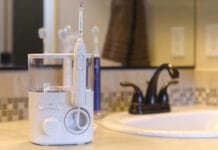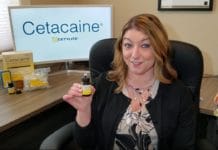The composite resin materials that are used in fillings and other dental restorations are durable and easy to match to the tooth’s enamel color, but they don’t do anything special to repel the bacteria that led to decay in the first place. Further, they don’t help eradicate harmful bacteria from forming on and around the new filling. Now, researchers at the University of Pennsylvania’s School of Dental Medicine have created a compound that effectively incorporates antimicrobial properties into dental material.
The desire to have a filling material that resists bacteria is nothing new, of course — but past attempts have not been able to identify a compound that is durable, nontoxic to the surrounding tissues, and able to withstand biofilm growth. The new dental material identified by Penn School of Dental Medicine researchers effectively kills bacteria without damage to sensitive gingival tissue.
To create the compound, researchers incorporated extremely low doses of the antibiotic imidazolium into a special resin. The resulting material isn’t harmful to the body and isn’t expected to have systemic side effects associated with antibiotic resistance because the antibiotic never leaches out of the resin. Instead, it only kills that bacteria that it comes in direct contact with. Researchers found it was effective in inhibiting the growth of bacteria like Streptococcus mutans, which is often found in oral biofilms.
One of the biggest issues with biofilms is that they form a tight matrix that is difficult to remove without manual force — that’s why dental professionals tell their patients to brush and clean interdentally regularly. The manual action of the brushing breaks down the biofilm’s matrix and removes the bacteria that is adhering to it. But this new dental compound prevents a matrix from ever taking its proper form. In other words, bacteria are killed off, and biofilms can’t form a strong structure that adheres to teeth. Any partial structure is much weaker and easier to remove via brushing and flossing.
“The force equivalent to taking a drink of water could easily remove the biofilm from this material,” explained lead researcher Geelsu Hwang, research assistant professor in Penn’s School of Dental Medicine.
In comparison, when researchers compared the performance of the new material to a traditional composite resin, it required four times the force to remove biofilms. Even then, bacteria were not completely eradicated like it was from the new composite.
A dental compound that repels bacteria without as much manual force is good news for patients who don’t adhere to recommended brushing times and techniques. At least 30 percent of Americans don’t brush twice a day, according to studies conducted by the American Dental Association. Only four in 10 Americans floss at least once a day. Any dental composite that repels bacteria with reduced manual removal of biofilms can help prevent decay and dental caries.
Use of an antimicrobial compound like the Penn researchers created could also help prevent additional caries from forming around the restoration location, which can sometimes happen if there are poor margins.
Right now, the new imidazolium-fused dental composite material has only been tested in the lab, and not on human subjects. Researchers hope their discovery will lead to further development of antimicrobial dental materials that will eventually be used on patients to reduce further dental decay.
The study was published in the journal ACS Applied Materials and Interfaces, which is associated with the American Chemical Society, and was funded by Dentsply Sirona, a dental equipment manufacturer.











